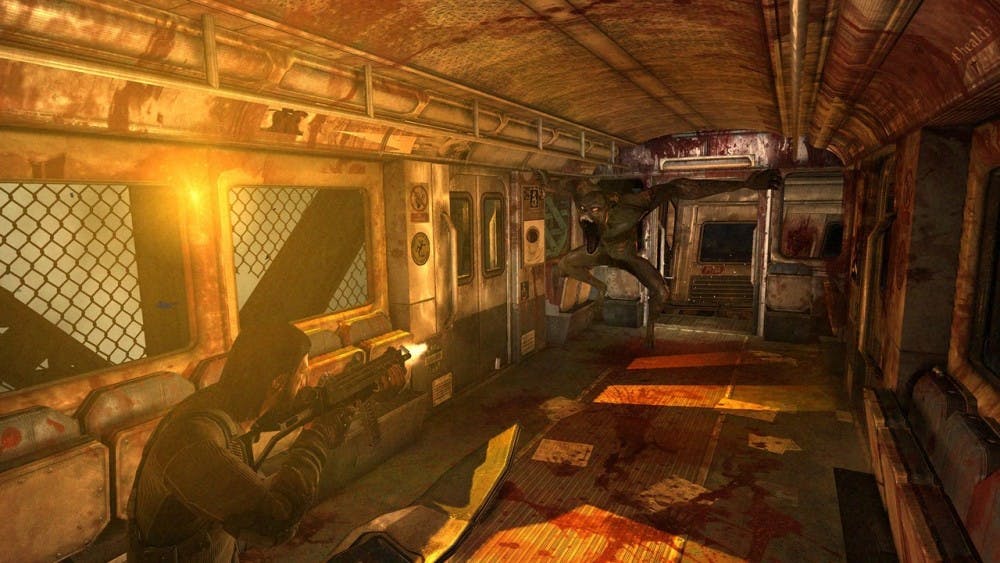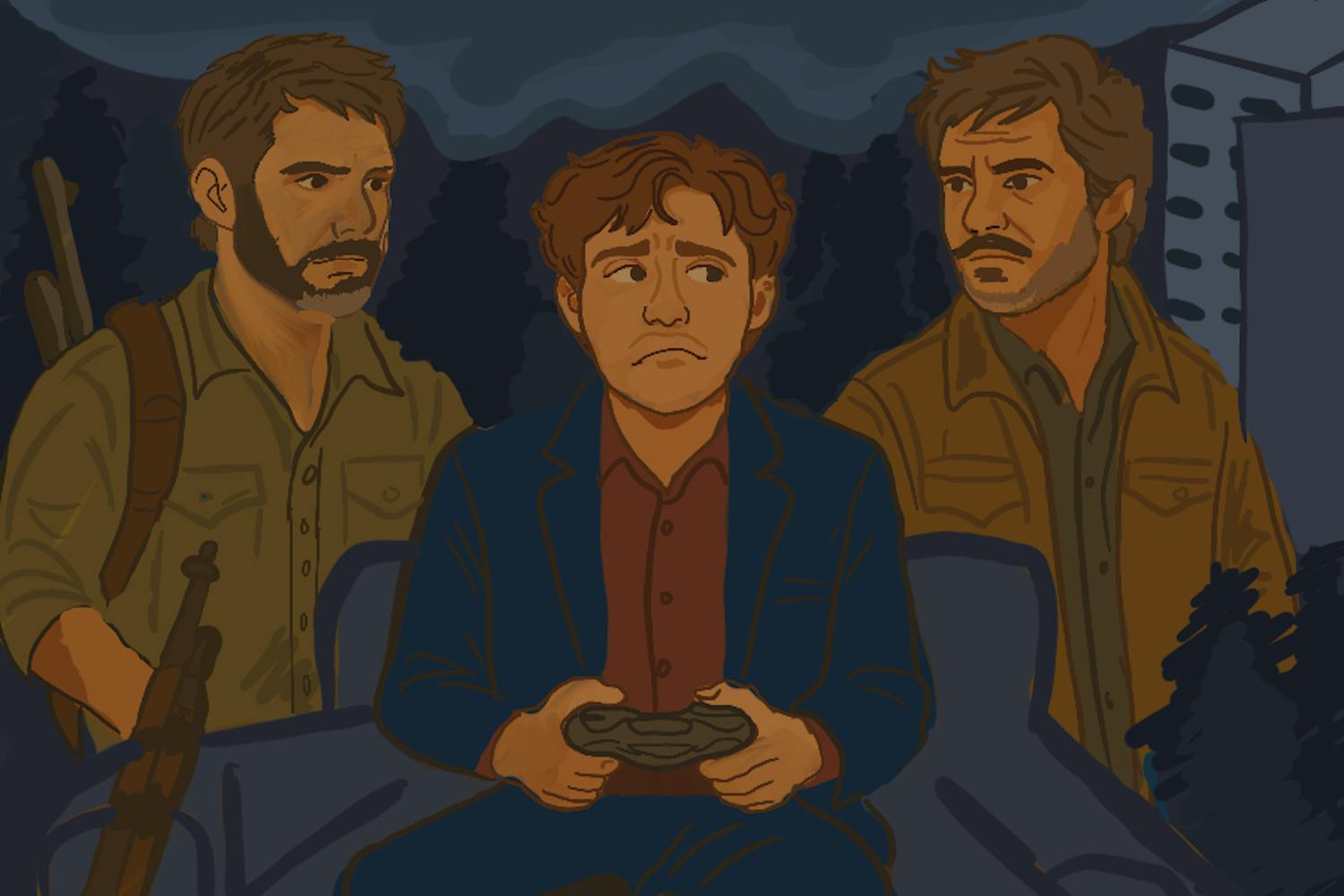“F.E.A.R. 3” sets itself apart from its predecessors by juxtaposing violent fast-paced action, a rewarding challenge system, and excellent cooperative play.
Unless you’ve played the previous F.E.A.R. titles, the single player will make terribly little sense. But if you’re a F.E.A.R. savant, the campaign will tie up the Alma saga quite nicely.
You start off as the first game’s protagonist, Point Man, as he and an apparition of his dead telekinetic brother, Paxton Fettel, break out of an Armacham prison.
After the game’s initial cinematic scene, its focus becomes a bit like muddy water. Point Man basically decides to go on a rescue mission for Jun Sun-Kwon – a briefly introduced Korean operative from the first game – and slaughter a bunch of Armacham operatives on the way.
The initial plotline motives are incredibly weak, but thankfully Fettel points out his brother’s threadbare lunacy at any appropriate moment throughout the game. In the end, Sun-Kwon convinces Point Man to stop Alma from delivering a child conceived at the end of “F.E.A.R. 2” because she is destroying the world with her telekinetic abilities, which are amplified during her contractions.
The plot doesn’t thicken much from there due to the lack of answering machine messages or emails to discover, which is an unfortunate change from the previous two titles.
The level design is stereotypically linear for a first-person-shooter, but it adds the somewhat annoying aspect of having to find a specific unlocked door to continue. Nevertheless, the levels flow smoothly enough, and figuring out where to go next doesn’t take more than a couple of minutes.
Level secrets this time around consist of hidden Alma dolls and disfigured corpses that Point Man psychically links to for more experience points. Unfortunately, the developers missed an easy way to give more depth to the story with these corpses by having the dead flesh out more of the story.
Another form of gaining experience is to complete a fun array of challenges on each level.
Some of the challenges are “Covert Op,” which require 10 kills from active cover, “Sweet Silence,” 15 melee attacks, and “Headhunter,” which takes 25 headshots.
Leveling automatically increases health, weapon abilities and psychic powers.
Although the story is lacking, F.E.A.R. has never been known for having a good plot; instead the game focuses on solid, quickly paced combat with brutal death sequences.
The first play-through of the single-player campaign is done solely with Point Man. He once again plays as a typical first-person-shooter tank, absorbing damage like a boss and dishing out insane amounts of death in return. As a genetically enhanced soldier, Point Man also has the psychic ability to slow down time, which becomes quite useful as the game’s enemies are pretty intelligent.
The artificial intelligence isn’t up to par with “Crysis 2,” but enemies efficiently flank and take cover when appropriate.
At Point Man’s disposal is a pretty standard array of weaponry: pistols, machine guns, explosives and sniper rifles. The sniper is a treat to use because it’s able to remove individual body parts before making an enemy explode. The best part of combat is the mechanical combat suit, which is pure destructive fun.
One of the qualities lacking in many recent shooters is replay value, but in “F.E.A.R. 3,” it’s carefully considered. After Point Man completes a level, it becomes available to be played through again as Fettel, who has a completely different combat style.
Fettel solely uses his slowly recharging psychic abilities to suspend an enemy in midair, shoot weak telekinetic pulses, or possess a soldier and either use them for combat, or make them explode from the inside.
The other consideration for replay value is “F.E.A.R. 3’s” excellent multiplayer. Instead of creating another rag-tag player-killing-player scenario, the game focuses on cooperative modes that four players can partake in at a time.
There are four multiplayer modes outside of the cooperative campaign: “Contractions,” “Soul King,” “Soul Survivor” and “F-king Run!”
“Contractions” is akin to “Gear of War 2’s” “Horde” mode spliced with “Call of Duty’s” famed zombie game-type, in which players have to fight off waves of increasingly difficult enemies and salvage ammunition and base fortifications.
“Soul King” uses Fettel’s soul-hopping ability to skip between combatants and kill as many of their allies as possible.
“Soul Survivor” randomly turns one of the four players into a ghost, and that player has to turn the other three into ghosts are well before the allotted time runs out.
“F-king Run!” is a simple game-type that is executed brilliantly. It pits the four-player team against a looming wall of deadly smoke that swiftly gets closer and if it touches a single player, the entire team loses. The objective is to traverse a city littered with enemies while evading the wall of ever-increasing death.
“F.E.A.R. 3” does an elegant job at incorporating an element of anxiety and tension into each playlist.
Instead of the sudden spurts of fright found in the “Dead Space” series, “F.E.A.R. 3” continues to set an ominous tone akin to its predecessors through acute sounds, eerie lighting, and unexpected flashbacks plagued with demonic enemies. Include the cut-scenes created with help by legendary horror film director John Carpenter, and the final product is pretty well done.
Reach the reporter at tdmcknig@asu.edu





